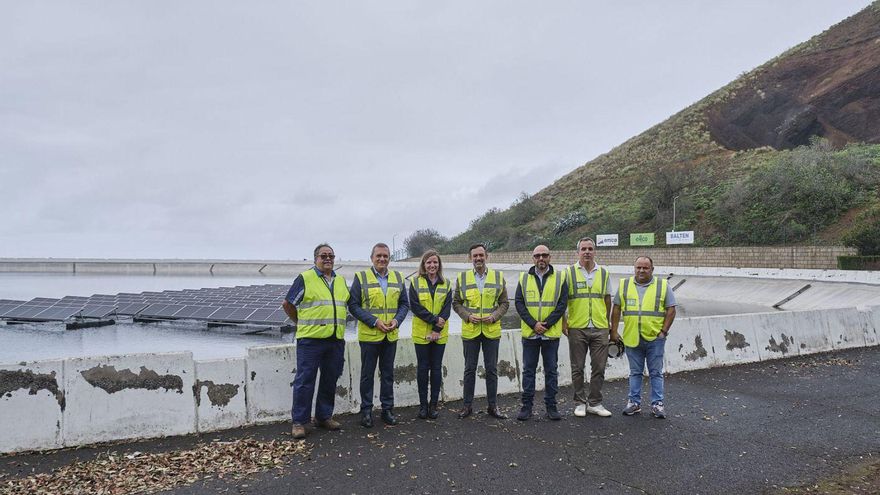
The Cabildo is investing 349,794 euros in the inaugural project of the Balten Decarbonization Plan, which is being implemented at the San Antonio pond in La Matanza. The vice-president of the insular Corporation, Lope Afonso, together with the Primary Sector councillor, Valentín González, visited this facility yesterday, marking it as a groundbreaking initiative in the Canary Islands, expected to be completed by the first quarter of 2025.
Lope Afonso stated, “We are witnessing a significant milestone.” He emphasised that “with the photovoltaic system, we are primarily enhancing the self-consumption of our facilities, while simultaneously saving energy and reducing pollution.” Through its execution, “we aim to prevent the release of 124 tons of CO2 into the atmosphere, which is akin to planting approximately 6,200 trees.”
The councillor for Institutional Relations also pointed out “the innovative nature of this project, which pertains to the energy consumption of this pond but aims to extend to other crucial facilities within the Tenerife raft network (Balten).”
Lope Afonso further clarified that “this initiative will lead to improved efficiency in water management, a crucial factor given the current water circumstances we face,” underscoring that “associating efficiency with water management confirms our commitment to enhance and increase agricultural water supplies.”
The project entails the installation of floating photovoltaic panels for the first time within the Archipelago
The island’s Primary Sector councillor, Valentín González, confirmed that “this reflects the Cabildo’s commitment, particularly from my department, towards social, economic, and environmental sustainability.” At the same time, it represents “a confirmation of our dedication to the energy-water relationship, ensuring our farmers receive quality water at a fair and reasonable price.”
The photovoltaic plant at San Antonio pond is the most remarkable undertaking of the Balten Decarbonization Plan, featuring the first floating panels installed in the Canary Islands. This will act as a pilot installation to evaluate various technologies.
The photovoltaic panels positioned on the water surface are slanted at a 15-degree angle and utilise bifacial plates, enabling them to harness energy from both water reflection and direct sunlight. Additionally, a separate installation with a lower inclination and monofacial panels (which will solely produce energy from direct sunlight) will be set up, complete with indicators to assess which configuration proves most efficient.
The goal is to replicate this system in other ponds within the network, such as the San Lorenzo pond in Arona. This initiative aims to cover nearly 50% of the water surface area to generate approximately one megawatt of photovoltaic energy, sufficient to meet the demands of the purified water desalination facility. There will also be potential to share this energy with the Montaña Reverón regional treatment plant, expected to be operational in the first half of next year, according to the island government.















